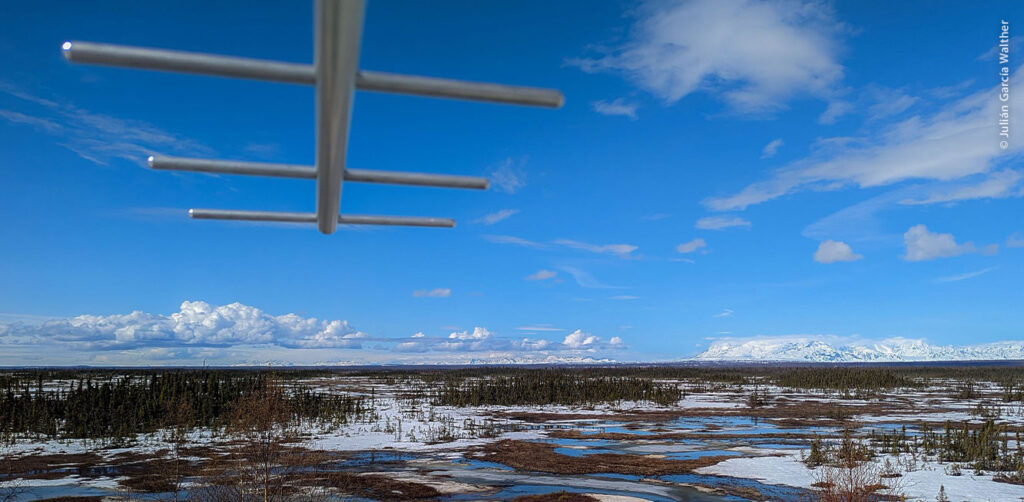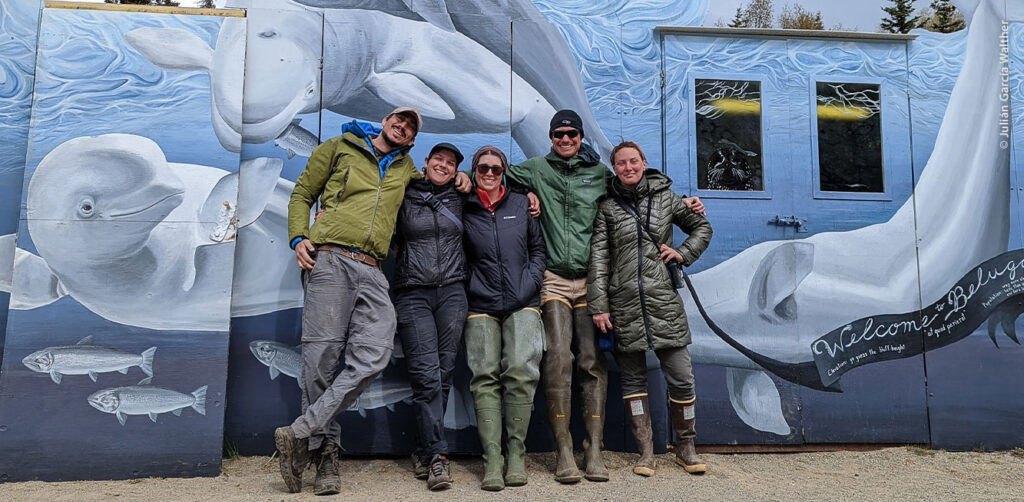Annual bird migration is one of the most amazing wildlife spectacles in North America. Highly sensitive to weather conditions, large flocks of birds leave their nesting sites in cold locations in Canada and the U.S., to undertake a long journey south, in search of better weather, as well as shelter and food. More than a million birds travel the Pacific coast ong routes learned generation after generation, to congregate on the coasts and wetlands of Northwestern Mexico.
Undoubtedly, the presence of migratory birds in our region is an indicator of the environmental conditions we have, and of possible threats to our ecosystems. Therefore, in order to study bird migration on the Pacific coast in depth, Pronatura Noroeste works with several organizations, research centers and governments from several countries. This is carried out through a network of receiving stations, called Motus stations (Latin term for movement), installed at strategic points along the continent. Each station has antennas that capture the movements of the birds, as some of them carry a small radio locator. All the data is stored in a computer system for conservation purposes.

Recording bird migration requires a wide distribution of these Motus stations, which are operated by conservationists, land managers and scientists from several countries. As part of this international effort, last May Julián García Walther, Motus initiative coordinator at Pronatura Noroeste and doctoral candidate at the University of South Carolina, participated in the process of installing three Motus stations in Beluga, Alaska, in collaboration with the University of South Carolina, The Nature Conservancy, Cordova Ranger District and Audubon.
It should be noted that migratory monitoring of birds leads to the analysis of migratory connections between the continent’s ecosystems, as well as the species behavior, threats and population trends.

One species in the monitoring process is the Red Knot (Calidris canutus roselaari), a widely known bird in our region. It is a medium-sized bird, with short legs and a reddish plumage, with a mix of brown, white and black plumage. The Red Knot nests in the Arctic Circle, and in winter, travels to the wetlands of northwestern Mexico, where it feeds on mollusks, crustaceans, and insects. Other species with migratory records include the Short-billed Curlew (Limnodromus griseus), the Long-billed Curlew (Limnodromus scolopaceus), and the Straight-billed Curlew (Limosa haemastica), among many others.
A striking fact is that, as is the case with birds, conservation experts themselves undertake long journeys to carry out this task. As proof of this, experts from Mexico, Peru, Ecuador, and the U.S. participate in the shorebird monitoring collaboration.

Likewise, Julián García Walther collaborated in the capture of 102 Red Knot in Grays Harbor, Washington, for the placement of satellite transmitters. This will serve to estimate how many of these birds use the nesting and breeding sites, as well as their movements in Mexican territory and their return trip to North America. For this purpose, specially designed aero boats and nets were used to capture the birds and place the transmitter on them without causing them any harm. This work was done in coordination with the Washington Department of Fish and Wildlife, the Alaska Migratory Bird Bureau and the U.S. Forest Service.
This trip was made possible by funding from the University of South Carolina and the U.S. Forest Service.
We invite you to contribute with us to continue this important conservation work.












